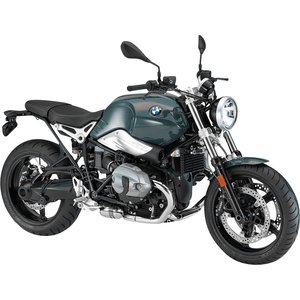BMW R nineT Pure [2016-2019]: A Purist’s Canvas for Timeless Motorcycling
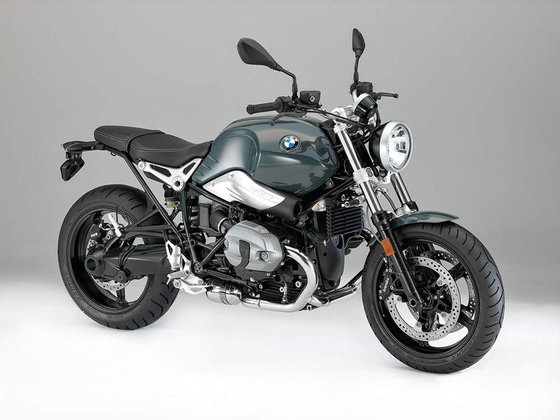
Introduction: The Essence of Simplicity
The BMW R nineT Pure is a motorcycle that demands to be felt, not just ridden. Designed as a blank slate for motorcyclists who crave authenticity, this 2016–2019 model generation strips away excess to focus on the raw, mechanical joy of riding. Built around BMW’s iconic air/oil-cooled boxer engine and housed in a modular chassis, the Pure is a love letter to motorcycling’s golden era—with just enough modernity to keep it relevant. Whether you’re carving backroads or customizing it into a one-of-a-kind machine, the Pure’s character lies in its ability to be whatever its rider needs it to be.
Design: Minimalist Aesthetics, Maximum Appeal
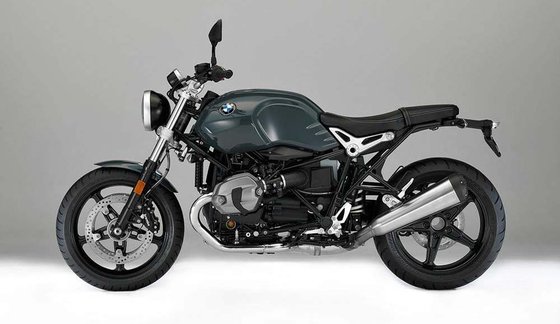
The R nineT Pure’s design is an exercise in restraint. Gone are the flashy adornments of its siblings; instead, you’ll find a steel fuel tank in understated hues like Catalano Grey or Black Storm Metallic, a slim bench seat, and a compact tail section. The spoked wheels (optional on earlier models, standard later) add a vintage touch, while forged aluminum footrests and fork bridges hint at precision engineering.
The modular frame is the Pure’s secret weapon. Its three-section design allows easy customization—remove the pillion frame for a solo ride aesthetic or bolt on aftermarket subframes for luggage. The 17-liter fuel tank isn’t just a styling nod; its narrow waist lets riders grip the bike with their knees, creating a tactile connection that modern bikes often lack.
Engine & Performance: The Heartbeat of Heritage
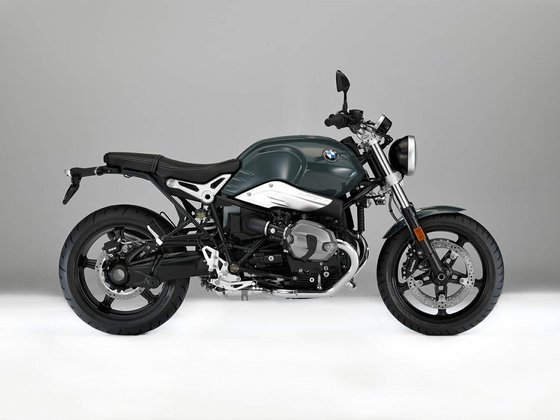
At the core of the Pure is BMW’s 1,170 cc air/oil-cooled boxer twin, producing 110 HP at 7,750 RPM and a hearty 116 Nm (85.6 lb-ft) of torque at 6,000 RPM. This engine is a study in duality: it’s tractable enough to lug from 2,000 RPM in sixth gear yet thrives when revved out to its 8,500 RPM redline. The power delivery is linear, with a surge of midrange punch that makes overtaking effortless.
The shaft drive adds weight (219 kg / 482.8 lbs wet) but eliminates chain maintenance and delivers silky-smooth power transfer. Fuel economy sits at 5.3 L/100 km (44.38 mpg), giving a theoretical range of 320 km (200 miles) from its 17-liter tank—enough for spirited day trips.
Handling: Old-School Charm Meets Modern Control
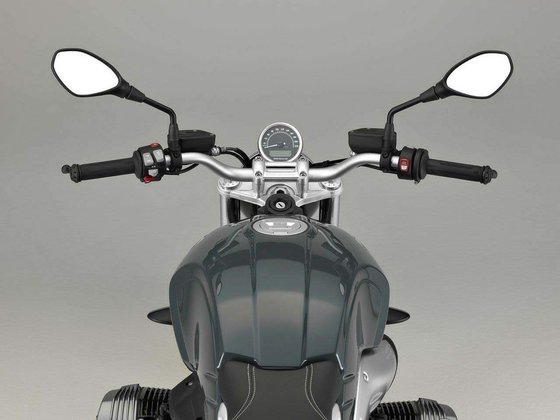
The Pure’s chassis is a mix of classic and contemporary. The 43 mm telescopic fork (non-adjustable) and Paralever rear suspension prioritize simplicity over adjustability, offering 125 mm (4.9 in) and 120 mm (4.7 in) of travel, respectively. While not as plush as USD forks, the setup strikes a balance between agility and stability, with a 26.6° rake and 105 mm (4.1 in) of trail ensuring predictable cornering.
Braking is handled by dual 320 mm front discs with radial four-piston calipers and a single 265 mm rear disc. ABS is standard, providing confidence in wet conditions without intrusive intervention. The 180/55-ZR17 rear tire offers ample grip, though the upright riding position encourages spirited leans rather than knee-down heroics.
Ownership Experience: Living With the Pure
Ergonomics & Comfort
With an 805 mm (31.7 in) seat height, the Pure accommodates riders of most statures. The neutral riding position—pegs slightly rear-set, wide handlebars—suits both city commutes and multi-hour tours. Vibration is minimal thanks to the boxer’s inherent balance, though the seat firms up after 90 minutes. Heated grips (optional on some years) extend riding seasons into cooler months.
Customization Potential
BMW designed the Pure to be personalized. Swapping the exhaust, adding a café raer tail, or installing lower handlebars takes minutes thanks to the modular frame. MOTOPARTS.store offers bolt-on upgrades like:
- Aftermarket exhaust systems (shed 5+ kg vs. the stock unit)
- Retro-style LED turn signals
- Suspension kits for improved adjustability
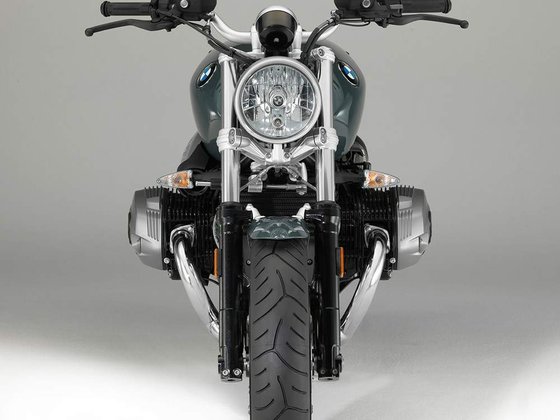
Competition: How the Pure Stacks Up
The Pure’s rivals blend retro styling with modern performance:
Ducati Scrambler Icon
- Pros: Lighter (186 kg / 410 lbs), more agile, lower seat height.
- Cons: Chain drive requires maintenance, less torque (73 Nm), lacks the Pure’s customization flexibility.
Triumph Bonneville T120
- Pros: Parallel-twin charm, premium finish, superior seat comfort.
- Cons: Heavier (230 kg / 507 lbs), less power (79 HP), higher price when new.
Yamaha XSR900
- Pros: Triple-cylinder excitement, advanced electronics (TC, ride modes).
- Cons: Lacks the Pure’s analog soul, chain drive, buzzy at high RPM.
Verdict: The Pure wins on character and customization. Its boxer engine and shaft drive offer a unique blend of nostalgia and practicality that competitors can’t match.
Maintenance: Keeping the Boxer Alive
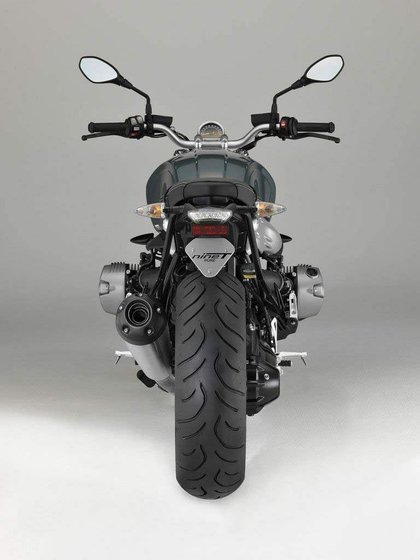
The R nineT Pure is built to last, but adherence to service intervals is key:
- Valve Clearances: Inspect every 10,000 km (6,200 miles). Intake: 0.13–0.23 mm, Exhaust: 0.30–0.40 mm (cold).
- Oil Changes: Use SAE 15W-50 (4.0L with filter). Synthetic 75W-90 gear oil for the transmission (700 ml) and final drive (180 ml).
- Tire Pressures: 2.5 bar (36 psi) front, 2.7 bar (39 psi) rear (solo riding).
- Brake Fluid: Replace every two years with DOT 4.
Common upgrades via MOTOPARTS.store:
- High-flow air filters for sharper throttle response.
- Reinforced clutch kits for heavy-duty use.
- LED headlight conversions for improved visibility.
Conclusion: Timelessness, Perfected
The BMW R nineT Pure isn’t just a motorcycle—it’s a statement. For riders tired of chasing specsheets, it offers a return to motorcycling’s roots, where feel and simplicity reign supreme. Its boxer engine thrums with purpose, its chassis begs to be tweaked, and its design ages like fine wine. Whether you’re a weekend warrior or a full-time customizer, the Pure isn’t just a bike you ride; it’s one you make your own.
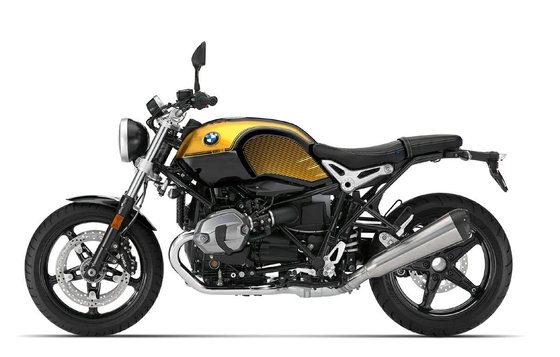
Ready to make your R nineT Pure uniquely yours? Explore MOTOPARTS.store’s curated selection of upgrades—where heritage meets innovation.



Specifications sheet
| Engine | |
|---|---|
| Stroke: | Four-stroke |
| Max power: | 81 kW | 109.0 hp |
| Max torque: | 116 Nm |
| Fuel system: | Electronic intake pipe injection |
| Max power @: | 7750 rpm |
| Displacement: | 1170 ccm |
| Fuel control: | DOHC |
| Max torque @: | 6000 rpm |
| Configuration: | Oposite |
| Cooling system: | Air/Oil cooled |
| Compression ratio: | 12.0:1 |
| Number of cylinders: | 2 |
| Valves per cylinder: | 4 |
| Dimensions | |
|---|---|
| Wheelbase: | 1493 mm (58.8 in) |
| Dry weight: | 220 |
| Wet weight: | 219 |
| Seat height: | 805–820 mm (31.7–32.3 in) |
| Overall width: | 900 mm (35.4 in) |
| Overall height: | 1240 mm (48.8 in) |
| Overall length: | 2105 mm (82.9 in) |
| Ground clearance: | Not specified |
| Fuel tank capacity: | 17 L (4.5 US gal) |
| Drivetrain | |
|---|---|
| Clutch: | Single dry plate clutch, hydraulically operated |
| Final drive: | shaft |
| Gear ratios: | 1st 2.375 / 2nd 1.696 / 3rd 1.296 / 4th 1.065 / 5th 0.939 / 6th 0.848:1 |
| Transmission: | 6-speed, constant mesh |
| Maintainance | |
|---|---|
| Rear tire: | 180/55-z-17 |
| Engine oil: | 15W50 |
| Front tire: | 120/70-z-17 |
| Brake fluid: | DOT 4 |
| Spark plugs: | NGK MAR8B-JDS |
| Spark plug gap: | 0.8 |
| Engine oil capacity: | 4.0 |
| Gearbox oil capacity: | 0.7 |
| Final drive oil capacity: | 0.18 |
| Engine oil change interval: | Not specified (refer to manual) |
| Valve clearance (intake, cold): | 0.13–0.23 mm |
| Valve clearance check interval: | 24,000 km (recommended) |
| Valve clearance (exhaust, cold): | 0.30–0.40 mm |
| Recommended tire pressure (rear): | 2.7 bar (39 psi) solo, 2.9 bar (42 psi) with passenger |
| Recommended tire pressure (front): | 2.5 bar (36 psi) |
| Additional Features | |
|---|---|
| ABS: | Standard |
| Wheels: | 5-spoke cast alloy (wire-spoked wheels optional) |
| Exhaust: | 2-in-1 stainless steel system |
| Frame customization: | Removable pillion frame for single-rider configuration |
| ASC (Automatic Stability Control): | Optional |
| Chassis and Suspension | |
|---|---|
| Frame: | Modular steel tubular space frame |
| Trail: | 105 mm (4.1 in) |
| Rear brakes: | Single 265 mm disc, 2-piston floating caliper (ABS standard) |
| Front brakes: | 2 x 320 mm floating discs, 4-piston radial calipers (ABS standard) |
| Rear suspension: | Cast aluminium single swinging arm with BMW Paralever, adjustable spring preload and rebound damping |
| Front suspension: | Telescopic forks, 43 mm fixed-tube diameter |
| Rake (fork angle): | 26.6° |
| Rear wheel travel: | 120 mm (4.7 in) |
| Front wheel travel: | 120 mm (4.7 in) |



